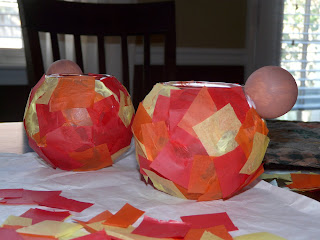In our old house (we recently moved), I didn't really have anywhere to hang a poster. Instead, I wrote each item on a piece of paper and hung each paper on cupboards in the kitchen.
When we moved, I now had room for a poster. So I made one. Since we have been using it, I have grown to like it so much that I think I should have tried harder to find a place in the old house. I have since thought of lots of places I could have put it.
Here is how I made it:
SUPPLIES
- Poster board
- Computer and printer
- Scrapbook paper
- Scissors (I used a scrapbook rotary cutting board)
- Glue stick
- Tape (to hang the poster)
- Type and print (or write out) the headings for each category on your learning poster. Just be sure you don't print each title larger than can fit in its respective columns.
- Cut out rectangles to put each item on each week.
- Cut out each title.
- Glue each rectangle in place.
- Glue each title onto scrapbook paper (card stock).
- Hang the poster.
- At the beginning of each week, create your items for your learning theme.
- I put up the theme picture, vocabulary picture, and nursery rhyme at the beginning of each week.
- On each respective day, I add the appropriate picture. So on letter day, I add the printout of the letter.
- Each morning, we review all that is on the poster.
I made mine a bit more colorful than the one on the preschool blog. This wasn't difficult, but more time consuming than it needed to be. In my mind, it was worth it :) Decide for yourself. I didn't worry so much about having perfect spacing around the words.



























.jpg)











